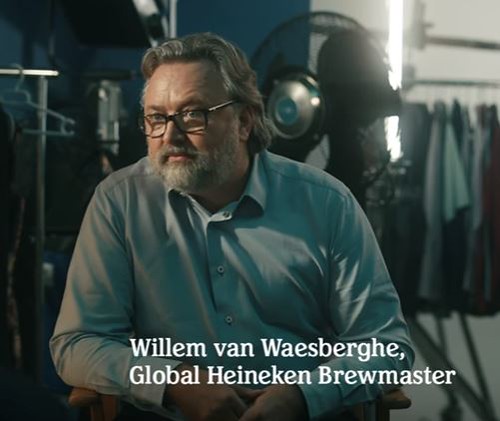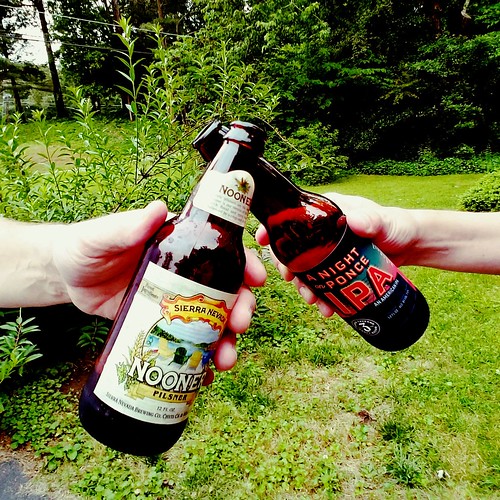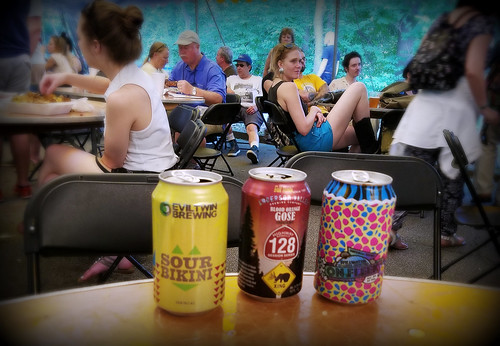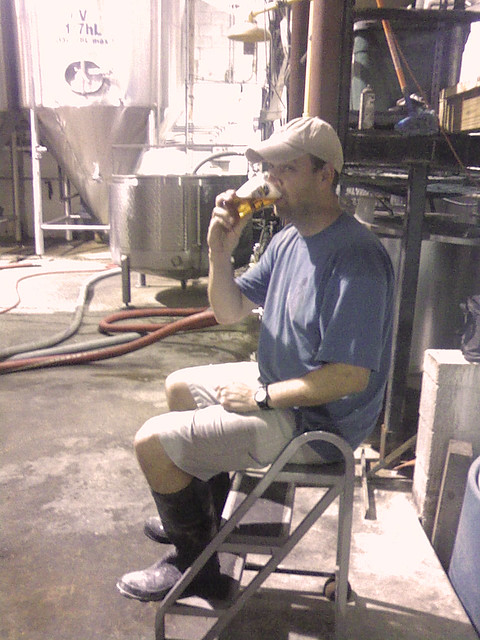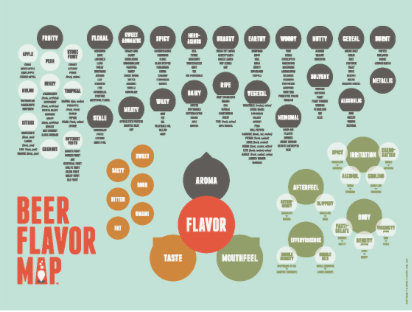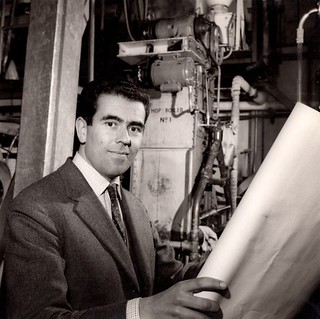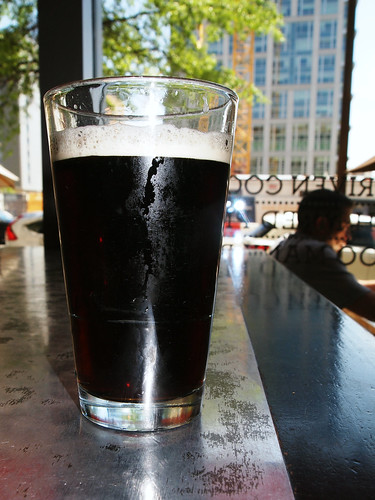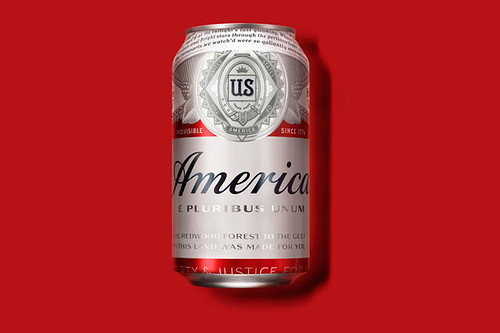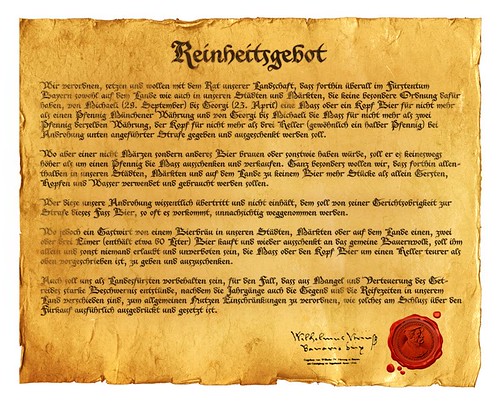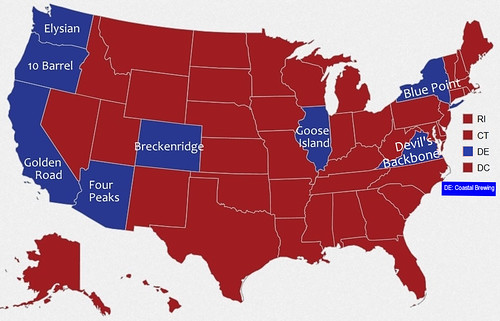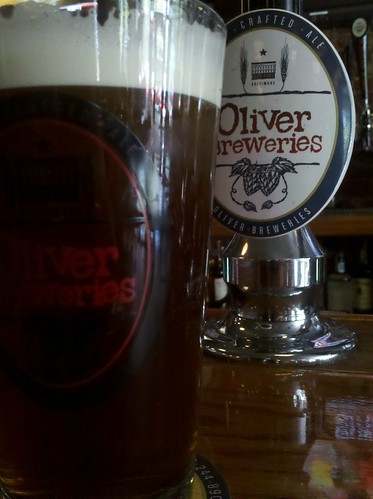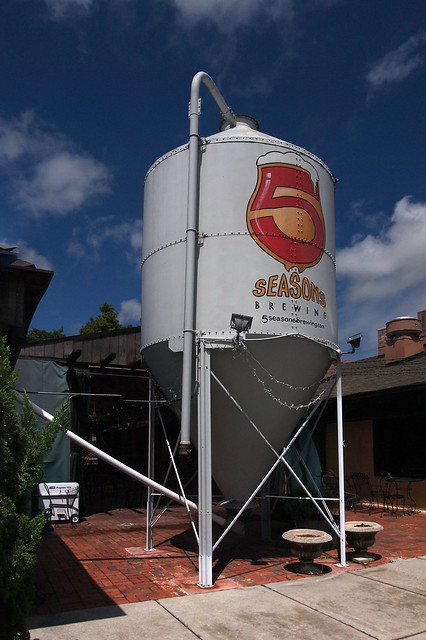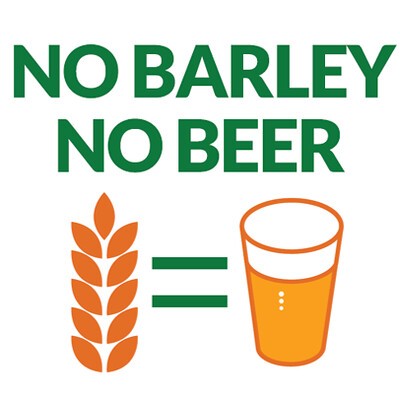YFGF has a Facebook companion page, reserved for quick posts of longer length than on Twitter. Here are a few of the topics I've been covering there recently.
*****************
Craft Beverage Modernization and Tax Reform Act
With its 218th co-sponsor, the
Craft Beverage Modernization and Tax Reform Act (H.R. 2903) is now supported by a majority of the U.S. House of Representatives. As with the
Small BREW Act before it, will a vote actually be taken?
Specific provisions of H.R. 2903 include:
- Reducing the federal excise tax to $3.50 per barrel on the first 60,000 barrels for domestic brewers producing fewer than 2 million barrels annually.
- Reducing the federal excise tax to $16 per barrel on the first 6 million barrels for all other brewers and all beer importers.
- Keeping the excise tax at the current $18 per barrel rate for over 6 million barrels.
- Reducing bonding and filing requirements for the 90% of American craft breweries that pay less than $50,000 per year in federal excise taxes.
- Expanding the list of ingredients that could be automatically included in beer without federal government approval.
- Allowing small, unaffiliated brewers to greater collaborate on new beers by giving them the flexibility to transfer beer between breweries without tax liability.
Read more at the [U.S.]
Brewers Association.
*****************
Steam Powered Brewery
Thursdays are
#VeggieDag at YFGF: stories about an animal-free diet and ecological and environmental issues. Sometimes that and beer (a fine vegetarian foodstuff) coincide. Such as
this:
Alaskan Brewing Co. produces 140,000 barrels of beer annually and, as by-product, produces 4,500 tons of spent grain. Over the next 10 years, by re-utilizing their waste product as fuel, the brewery is set to save over 1.5 million gallons of fuel, reducing the company’s fuel oil consumption by 70%. Because this system runs entirely on dried spent grain, burning to create steam which powers their entire facility, less transportation of outside ingredients is required, further alleviating costs to this Juneau [Alaska]-based brewery.
*****************
Beer & Politics
John Hickenlooper —'craft' beer pioneer, Governor of Colorado, and potential Democratic vice-presidential candidate—was interviewed on National Public Radio's
The Diane Rehm Show.
John Hickenlooper, the Democratic Governor of Colorado, did not take a traditional path to politics. In the 1980s, he was laid-off as a geologist in Colorado. He decided to open up a micro-brewery [Wynkoop] in Denver. The company played a key role in gentrifying downtown – and made him a popular businessman. He was persuaded to run for mayor and won. Hickenlooper’s knack for striking a deal appealed to democrats and republicans and helped him get elected governor. But he narrowly won re-election two years ago.
Hickenlooper's memoir, "
The Opposite of Woe," was recently published, and timing is everything. Hickenlooper is considered to be a potential vice-presidential running mate for Hillary Clinton. That is, of course, if she secures the Democratic nomination for President.
*****************
The Metastasizing of Beer Styles
"
The Growing Irrelevance of Beer Styles," by Craig Thomas of
Cara Technology. Preach on brother; preach on!
Beer styles, whatever they come to be, used to be based on a number of things: history and/or provenance, ingredients, brewing technique, and overall sensory profile (I include basic specifications such as SRM and IBUs in this category). Thus, by citing a beer as a porter, you are at the very least signifying that it will be a dark, malt-forward beer that may display a bit of chocolate character. At most you are tapping into a customer’s knowledge of the history, ingredients and process of that style to contribute to their own enjoyment of the beer, or even build your brand’s own history and reputation. [...]
In the past five years (give or take) however, many of these things have been thrown out the window.
Not only have we effectively eliminated the communicative efficiency and advertising capability that beer styles afforded us (‘It’s an IPA’ versus ‘Eh, it’s a hoppy beer that I made because I took inspiration from these British beers that were shipped to India that I read about’) but we also pretend that this method is still working, and even worth supporting, despite its proven track record of sowing confusion and discord in the ranks of today’s brewers and beer drinkers. [...]
Beer styles are no longer useful categorizations: they have become points of debate and have effectively shifted consumer and brewer conceptions of what good beer is into the realm of ‘new is automatically good’. The system is broken, and it’s time for a new one to come into play.
A Twitter-er had this to say in response:
To which I would say this: Fair enough, but the 'style' specifications promulgated by the
BJCP (
Beer Judge Certification Program) and the [U.S.]
Brewers Association (for the
Great American Beer Festival and
World Beer Cup) often become the de facto references for beer styles in the greater 'craft' beer world.
*****************
Alms for the ales
Ballast Point Brewery (of San Diego, California) has announced that it will be opening an East Coast brewery in Botetourt County, Virginia, located outside of the city of Roanoke. Ballast Point thus joins Deschutes Brewery, of Oregon, which, in March, announced that it will be building an East Coast production brewery in Roanoke.
Ballast Point is the 17th largest brewery in the country. It had also been considered the 11th largest American 'craft' brewery, until December, that is, when it was purchased by Constellation Brands (of New York).
Constellation is a wine and spirits brands conglomerate. In 2013, it became the brewer of Corona for the U.S. market (and thus the 3rd largest brewery in the country) after Anheuser-Busch InBev divested its import of Modelo Brewing beers into America to avoid federal antitrust problems when it purchased that Mexican brewery. As a result, the [U.S.] Brewery Association no longer considers Ballast Point to be independent and, thus, no longer 'craft.'
Ballast Point will receive a $2.4 million grant from the state of Virginia's Commonwealth’s Opportunity Fund to assist with the project and be eligible for a $250,000 grant from the governor’s Agriculture and Forest Industries Development Fund. Botetourt County will provide about $1.4 million in tax incentives, along with performance grants estimated at $650,000. This public largesse adds up to a cool $4.7 million.
Ballast Point/Constellation says that it will spend $48 million to open the brewery and taproom in a 259,000-square-foot former auto parts manufacturing building, and eventually hire 48 employees. No timeline has been announced, but occupancy can begin in September.
Deschutes — soon to be Ballast Point's Roanoke-area brewery mate— is the 12 largest brewery in the U.S., and, still 'independent,' the 6th largest American 'craft' brewery.
Read more at
*****************
Sour grapes barleycorns
Chris Black of the renowned
Falling Rock Tap House, in Denver, Colorado, is upset, very upset, that the Oskar Blues Brewing Company (also of Colorado, if not Denver) is building a taphouse in Denver that will compete with his. In one revealing sentence, he exposes the crybaby faux-purity of the 'craft' beer business:
In the Craft Beer Industry, it’s either you are WITH it, or you are AGAINST it, there really is no in-between.
Falling Rock may be one of my favorite taprooms in the U.S., but I'm not a fan of Black's comments. The emperor has no clothes. There is no 'craft' beer industry and there are no revolutionaries. There's a beer industry; there are beer businesspersons.
Read more (without my commentary) at
The Full Pint.
*****************
The tyranny of the majority.
As if you needed any more proof that 'craft' brewery is a meaningless term, the
Virginia Craft Brewers Guild has just declared Devils Backbone Brewing to be not 'craft,' and kicked the brewery out of its club, not because Devils Backbone's beer suddenly sucked, but because the brewery has experienced success beyond the scope that the Guild's members deem prim and proper.
And, it has been forbidden the brewery from competing in the Virginia Craft Brewers Cup in August, which the brewery has been hosting on its beautiful grounds for several years.
The [U.S.] Brewers Association —the progenitor of this 'craft' purity— will continue to warmly invite Devils Backbone to participate in the Great AMERICAN Beer Festival (where the brewery has, for several years, won more medals of brewing excellence than all Virginia breweries combined).
But Virginia's guild? Oh, no. It's holier than thou. Nah, nahna nah nah.
Read more (without my commentary) at
Virginia Craft Beer.
*****************
Nothing damns a 'craft' beer as successfully as its own success.
Bryan D. Roth, at his blog, "This Is Why I'm Drunk," writes about the strong dislike for Sam Adams beers held by a large subset of 'craft' beer drinkers. As example, he quotes Tony Magee, owner of Lagunitas:
Sam Adams has 'so little to do with what beer is doing today.' In other words, Sam Adams may have once been craft, but its size and lack of innovation mean it can no longer qualify.
Mr. Magee, as Roth points out, has since sold half of his brewery to Heineken, whereas Boston Beer, maker of Sam Adams, remains independent. Roth quotes others, who, although not as hypocritical, agree with Magee in animus. Then, weighing the particulars, he concludes:
The biggest beer enthusiasts are spending time calling out Sam Adams and those who appreciate those beers, but the truth is the brewery still sells a lot of beer. This is what happens when you build a successful business and accept that you can grow and people want you to grow. Just because those sales may focus more on Average Jane or Joe Drinker – who still constitute nearly all of craft beer purchases – does it now mean Sam Adams has entered the rarified air of Macro? I thought this kind of vitriol was only saved for AB InBev.
Or maybe it’s befitting that we’ve arrived at this (somewhat) ironic point, where a beer brand named after one of America’s Founding Fathers causes such divisiveness it may be considered an act of treason to craft’s self-appointed protectors if you admit you like it.
As for me, I’ll just keep drinking IPAs that are good.
Me, too.
-----more-----

